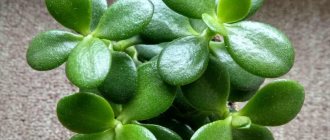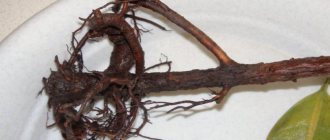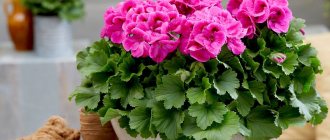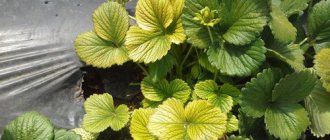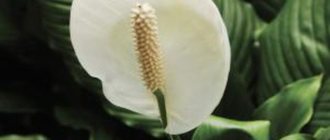Fuchsia has dropped all its leaves and is drying out, although I water it well, tell me how to save it
This phenomenon is a signal of an unfavorable situation around the plant. Identifying the root causes is difficult, but necessary. In extreme cases, when the plant has died, you need to do the following:
- Burn the soil and the remains of the plant or, seal it tightly, throw it into a trash container.
- Wash and disinfect the pot well.
- Buy new planting material and take precautions during planting.
- Treat the plants in adjacent pots and the soil in them with fungicides (antifungal drugs).
Fuchsia - home decoration
Propagation of fuchsia by cuttings and from seeds
The simplest and most effective way to propagate fuchsia at home is by cuttings. The best time for reproduction is spring and early summer. Fuchsia cuttings are done according to the following scheme:
- We cut off a branch five to ten centimeters from the mother plant.
- Cut off the lower leaves.
- Place the cutting in a humid environment (you can use a glass of water).
- When roots appear on the cuttings, plant them in a small container.
- As it grows, we transplant the plant into a pot of larger diameter. Propagation of fuchsia by cuttings
Fuchsia usually responds well to propagation by cuttings, and young plants bloom in the first year. Even a novice florist can cope with this simple method of propagating a flower. Propagation of fuchsia by seeds is a more complex process. It is recommended for experienced gardeners and is used mainly for breeding purposes. By propagating by seeds, you can obtain new varieties with beautiful colors and shapes.
The difficulty in growing fuchsia with seeds is that you need to collect the seeds from the plant. This is done like this:
- Self-pollination of the plant is prevented. To do this, the anthers of the unopened flower are removed.
- Pollen from the second plant intended for crossing is applied to the stigma of the pistil.
- Place a cloth bag over the pollinated flower, carefully tying it with thread.
- When the fruit is ripe, remove the bag and collect the seeds from it.
- Spread the fuchsia seeds and air dry for several days. Fuchsia seeds: photo
When the seeds are ready, you can start sowing them. To do this, we sow them in a container on moist soil. Next, the container should be placed under good lighting and the soil moisture level should be monitored. Shoots usually appear after a few weeks. After one and a half to two months, the seedlings can be planted more spaciously using the picking method. After another couple of months, the sprouts can be transplanted into pots.
Causes of leaf falling
Why do hydrangea leaves curl and turn inward?
Every gardener wondered why fuchsia sheds its leaves, what should I do? There is no clear answer. Leaf fall can be caused by:
- unfavorably low or high temperature, air humidity;
- drying out of the soil;
- insufficient lighting level;
- diseases;
- pests;
- lack of nutrition or excess fertilizer;
- leaf age.
Fuchsia sheds its leaves
Fuchsia is sick, although care is good
Inexperienced gardeners complain that the plant sheds leaves and buds, dries out, and the leaves tend to curl. The reasons for the poor condition are unclear, because they water it abundantly. Then it is necessary to identify why fuchsia leaves curl inward and what to do to restore it.
Fuchsia is a moisture-loving plant, but it does not like high humidity.
The plant's leaves curl
Determining the cause by external signs
Why do fuchsia buds fall off before they open?
To accurately recognize the causes of all possible fuchsia misfortunes, you do not need to be a scientist or have your own laboratory. Based on the external characteristics of the lesions, the correct cause can be determined. The following often occurs:
- The leaves are yellow, dry, falling. The earth is dry. Spraying with water is not carried out. There are cobwebs on the underside of the leaf. The spider mite is active.
- Plaque on vegetative organs, ulcers, pustules (voids on leaves filled with spores), cracking, rot, spots, growths - the result of the action of fungi and viruses that affect the main tissues of the plant.
- Wilting, curling of the entire leaf into a tube or its edges, death of part or the entire plant - infection with fungi that attack blood vessels.
Leaf rust
Rules for caring for fuchsia
Fuchsia requires certain conditions so that it can grow and bloom normally. First of all, we need to deal with the issue of lighting. Fuchsia loves bright, but at the same time diffused light. The flower should not be placed in direct sunlight, so it is best to place it on the western or northern side. Another important rule is that during the flowering period you cannot move the flower, otherwise all its buds may fall off.
The next step is watering the fuchsia. The plant must be watered abundantly in all seasons except winter. Watering should be carried out after the top layer of soil has dried. In winter, watering is more moderate. For irrigation, use settled water. In addition to watering, fuchsia responds well to spraying. You can even place a container of water next to the fuchsia pot. It is recommended to spray the flower in the morning or evening. In winter, spraying should be avoided so as not to cause excess moisture.
{reklama}We must not forget about the temperature regime. The most suitable temperature for flowering is the range from 18 to 26°C. In the summer heat, when the temperature exceeds the indicated degrees, the leaves of the plant may begin to dry out and fall off. If at the same time the fuchsia is also exposed to the scorching direct rays of the sun, then the plant is likely to die. With the onset of autumn, the plant must ensure that the temperature drops to 6-12 ° C, otherwise at higher temperatures the plant may begin to get sick, and its foliage will become smaller. The winter months are best spent in the garage or basement. At this time, lighting will not play any role for the plant, and the temperature should not fall below 4°C or rise above 12°C. The soil should not be allowed to dry out during these months.
Be sure to take care of fertilizing, which should be carried out throughout the year, except winter. For feeding, you can buy a ready-made solution specifically for fuchsias in the store. The flower should be fertilized once a week. Until the buds open, fertilizing can also be added to the water with which you will spray the plant. After flowering ends, the plant is not fertilized for some time, and then fertilizing is started again.
Diseases and pests
Why do violet leaves curl inward?
Fungal and viral diseases are usually to blame for why fuchsia withers in a pot:
- Rot makes the leaves underdeveloped and pale, falling off easily.
- Rust first appears on the underside of the leaf as orange-brown spots of spores. Then it moves to the upper surface. Fuchsia leaves begin to turn brown or yellow and fall off.
- The fungus botrytis blight identifies itself as a grayish-brown mold. Then the flowers become spotted and colorless. The buds begin not to open and rot. Leaves and stems wither.
- Verticillium wilt fungus causes leaves to wilt, curl, discolor and die. It differs from other mushrooms in that in mild climates, when the heat has not yet gained momentum, one can suspect its existence when faced with wilted or dried specimens.
Important! Any fungus is very difficult to deal with. To avoid having to treat the plant, it is recommended to pay special attention to the planting process. The use of fungicides is truly effective on planting material, since very small areas are treated at this time. The probability that spraying with the drug will not penetrate even a millimeter of the surface under the leaf or in the axil of the stems is practically 0.
Fuchsia leaves are falling, what should I do? A necessary condition for treating a flower is steaming the soil and removing the remains of dead or cut plants of any kind growing in the neighborhood.
When planting fuchsia in open ground in the warm season, everything becomes more complicated. The only currently available way to combat verticillium wilt fungus is to warm the soil:
- Dig up the soil.
- Moisten it with water.
- Cover with transparent film and bury its edges.
Plant affected by fungus
If there is at least 3 weeks (preferably 5) of bright sun and high temperature, the fungus will die. To reduce the spread of this disease, affected plants are destroyed and only resistant species are planted in their place. Silvered leaves, droppings, and discolored petals are signs of the life of tiny thrips. Aphids, whiteflies and other sucking creatures leave similar traces - sticky, stunted leaves, as if trying to curl into a small ball.
Fuchsia diseases: why do leaves turn yellow and fall off?
Beginner flower growers constantly have a question: fuchsia has dropped its leaves, what to do. The reasons are different, the development of diseases is possible, although she suffers from them quite rarely.
Fuchsia has dropped its leaves
What to do if fuchsia leaves fall:
- Small dewdrops or spots of powder structure on the leaves - excessive watering. The flower is treated with a solution of Fundazol (in a ratio of 1 to 11).
- Yellowing of leaves is a sign of chlorosis. Occurs due to waterlogging, lack of minerals (nitrogen or magnesium).
- The roots have turned brown (they are white when healthy). A change in color indicates the appearance of root rot. The reason is excess moisture. The affected areas are removed. If there are too many of them, the plant dies.
- Yellowed root collar and branches, brown spots at the bottom of the leaf - black leg and rust. All infected parts are removed, the flower is sprayed with preparations - “Topaz”, “Vectra” or “Strobe”. Tools that have come into contact with an infected plant must be disinfected.
There may be several reasons why fuchsia begins to shed its leaves:
On a note!
If your fuchsia leaves fall off in winter, you don’t need to think about what to do. This is a common phenomenon that occurs when the seasons change. However, if it sheds them throughout the winter, this indicates that the temperature in the room is too high. It should be reduced to the recommended values: +10…+12°С.
A few useful tips will help you avoid mistakes when growing fuchsia:
- In summer, the root system overheats. To avoid this, the flower is planted in ceramic pots with thick walls.
- In order not to expose the plant to stress, it should not be moved to another place unless absolutely necessary.
- A lack of light leads to strong elongation of shoots to the detriment of flowering. When such a tendency appears, you should periodically turn on the fluorescent lamp.
- Excess fertilizer, especially nitrogen, leads to an increase in green mass. Therefore, feeding more often than once every two weeks is not recommended.
An important nuance when growing fuchsia is creating the right conditions in winter. It is better to place the pot in the basement or pantry, because the flower does not need light at this time. An insulated balcony is also suitable, but direct exposure to the sun is undesirable. The main reason why fuchsia dries during the dormant period is excess light and water. Because of this, spots with a yellow border are formed.
Thus, there are several reasons why fuchsia leaves wither and fall off. This is a violation of the rules of care or illness. If measures are taken in time, the plant will quickly recover.
Fuchsia is very demanding on growing conditions. With insufficient air humidity and lack of light, fuchsia leaves turn yellow, dry out and fall off. How to prevent this? A description of the main diseases of fuchsia from specialists and their effective treatment will help beginners in successfully growing this indoor flower.
Nutrient deficiencies
Fuchsia is sensitive to soil fertility. The effect of a lack of essential microelements affects the growth rate of plants.
Lack of iron and other microelements
The consequences of a lack of microelements are manifested:
- Potassium. Weakened immunity, underdeveloped roots, decreased absorption of water and nutrients. Small holes on senescent leaves.
- Phosphorus. Weak growth, lack of flowering. Redness of leaves.
- Nitrogen. Acceleration of the beginning of flowering. The leaves are pale in color, turn yellow and fall off.
- Iron, manganese. Discoloration of leaves, increasing in proportion to the distance from the vessels.
- Calcium. Tendency to curl leaves with a spoon.
Note! Fertilizer may be less effective in dry and compacted soil.
Frequently Asked Questions: Fuchsia
| General information on caring for fuchsia. |
1. Fuchsia does not bloom!
Answer:
Tip 1.
I can recommend pinching it in the spring! New branches will definitely bloom. Remove wilted buds! And, of course, you need to feed them with fertilizers for flowering. A small pot is better, with a diameter of 10 cm. Nitrogen fertilizers (more precisely, complex fertilizers, but with a high nitrogen content) can and should be used, but during the growth period: in early spring or when you are growing cuttings. And after the buds appear, you need to switch to floral ones (i.e. with a high content of phosphorus and potassium). This is where Pokon is just a godsend! They also write on Western websites that fertilizers for tomatoes are very good. You can use “Ripen-ku” for peppers and tomatoes and alternate it with Pokon. They also love to be admired.

